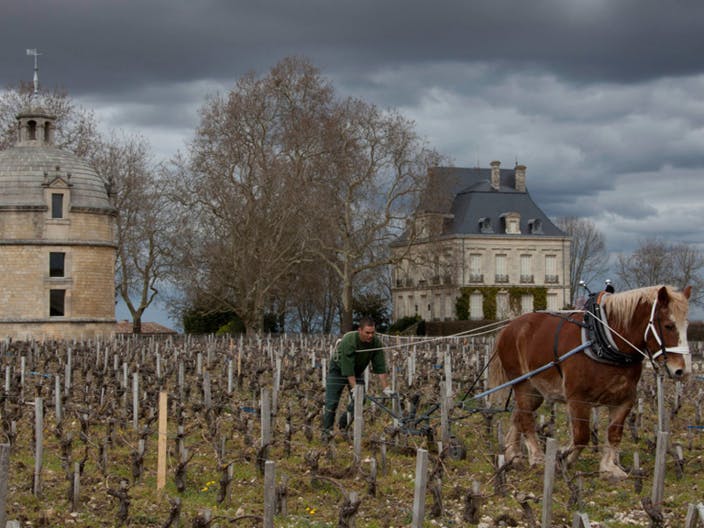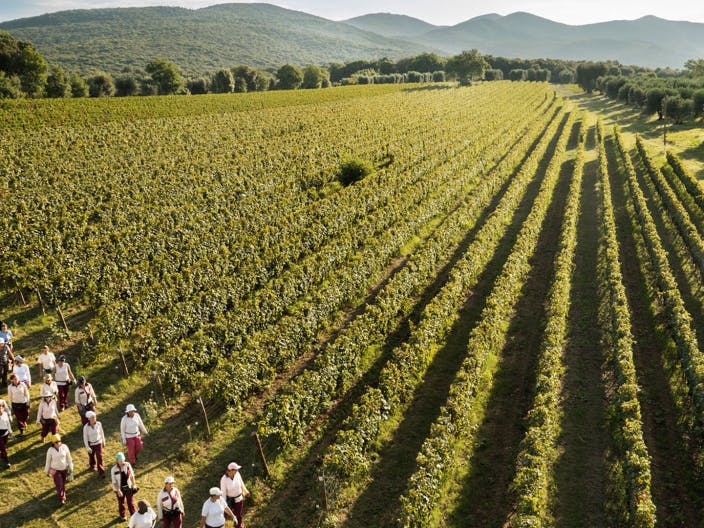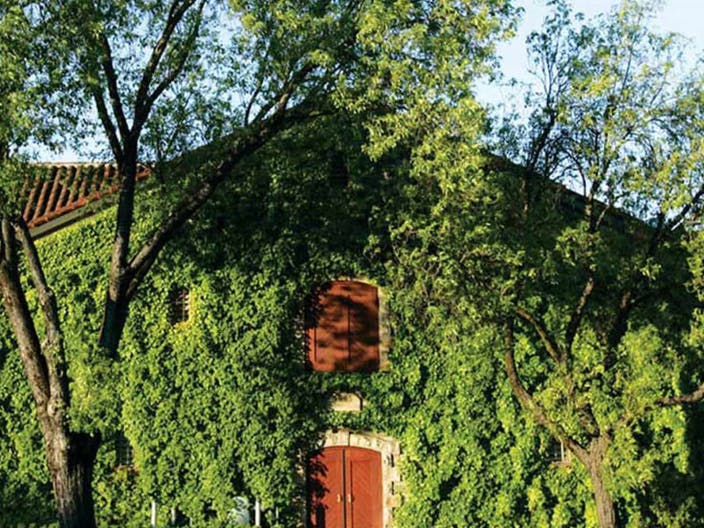In the vineyard
Latour is situated on what is arguably the best terroir on the Left Bank, built upon trademark Pauillac gravel and clay subsoil, and perfectly positioned to reap the benefits of the Gironde breeze, reducing the threats of both frost and mildew.
The property sits at the southern end of the Pauillac appellation, neighbouring Château Léoville Las Cases to the south in Saint-Julien. Its unique terroir is characterised by undulating small mounds made up of gravel, but also deep clay slate of different colours: blue, red and grey. It is this particular soil type that gives the wine its unique structural framework and power.
Being close to the Gironde, it benefits from the moderating influence of the river, which cools the temperature, allowing for longer, slower ripening of the grapes, and protects against the risk of frost. This terroir makes Ch. Latour arguably the most consistent performer among the First Growths, often producing the best wine in the Left Bank in cooler vintages.
There are 92 hectares of vineyards in total, with 47 of those the original prime plot that surrounds the château itself, known as L’Enclos – the Grand Vin is sourced exclusively from these vines. Cabernet Sauvignon makes up the bulk of the vineyard (76%), with 22% Merlot and the remainder split between Petit Verdot and Cabernet Franc. The vineyards have been certified organic since 2018, with L’Enclos all now farmed biodynamically.
In the winery
Once the fruit reaches the winery, it is sorted (both at bunch and berry level), everything de-stemmed and then gently pressed.
Each parcel is vinified separately – according to variety, vine age and vineyard plot – all fermented in stainless steel, temperature-controlled tanks, spending around three weeks on its skins.
The blending process starts in the January following harvest, with the wines then matured in the barrel cellar for around two years. The Grand Vin is aged in 100% new French barrels, while Les Forts de Latour sees 50% new oak.
The wines are fined with egg whites, racked and then bottled when ready. The Pauillac de Latour is kept for four to six years before release, Les Forts de Latour six to eight years and the Grand Vin between eight and 10 years.


